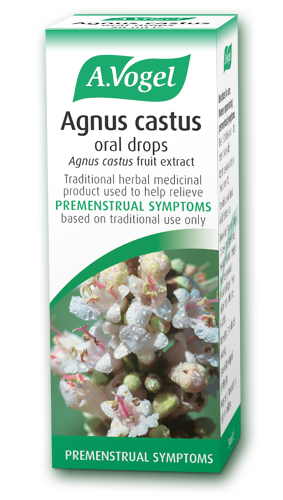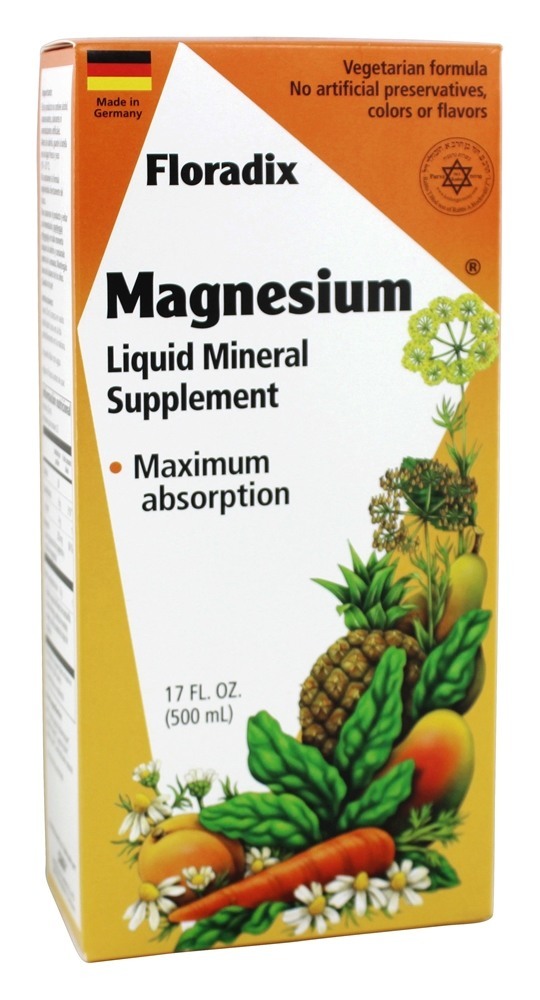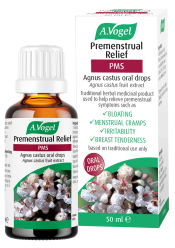A quick introduction to the world of PMS
As up to 80% of women are thought to suffer from PMS to some degree, there tends to be a great deal of variation in the symptoms experienced from woman to woman. In terms of the different categories of PMS, in many cases there will be some overlap in the symptoms, and combining the advice from 2 or more of the categories I explore below, may be most helpful.
As always, I’m here to help so if you want to talk one to one to help discuss what might be going on, feel free to email me directly at emmat@avogel.co.uk.
1 - PMS-A
A is for anxiety – often alongside irritability and erratic mood swings. Type-A PMS is primarily thought to be caused by oestrogen dominance. In oestrogen dominance, as the name suggests, oestrogen is thought to be dominant relative to our other main sex hormone progesterone (watch my video blog on this topic to find out more).
As a result of this hormone imbalance, some typical symptoms that can present themselves include anxiety, mood swings, water retention and in terms of your monthly period, we’re often talking heavier, more painful periods. You may also notice you also have a slightly shorter cycle, perhaps having your period arrive slightly sooner than every 28 days – oh the joys!
Diet & lifestyle tips:
Watching your diet and body weight is important if you fall into the PMS-A category, dairy for example, may exacerbate oestrogen dominant symptoms and if you’re struggling to lose a few pounds, excess fat within your adipose tissue can act as an extra store of oestrogen.
In type A PMS, it’s also important to support liver health as this important organ works hard to excrete any excess oestrogen. Going to the loo regularly is a must too as this helps take any excess pressure off of your liver, so tackling constipation if necessary is also a top priority.
Top product picks: 
To help counter oestrogen dominance I often recommend Agnus castus. Licensed to help relieve the symptoms of PMS, this herb helps to gently support progesterone levels, balancing the ratio between the two key sex hormones nicely. For best effects it should be taken daily and for a minimum of 3-4 monthly cycles.
Our Milk Thistle Complex often makes a good addition to Agnus castus as the unique combination of bitter herbs it contains helps to gently support your digestion, as well as the functions of your liver.
2 - PMS-D
D is for depression. Now, there’s a difference between low mood and depression. If you suspect you have depression it should be treated under the guidance of your doctor straight away. For low mood, and especially if your hormones have something to do with it (a tell-tale sign is if your symptoms appear at the same time each month), then we may be able to help.
When it comes to low mood and hormones, very often low oestrogen (and high progesterone in comparison) is at the root of the cause. This hormone imbalance often gives rise to slightly longer menstrual cycles, which means you may notice having your periods less frequently than every 4 weeks.
Whilst traditionally PMS-D affected a much smaller subset of women, nowadays (quite possibly as a result of the more widespread use of hormonal contraceptives) we’re finding that it’s becoming more common for women to present with typical ‘low oestrogen’ symptoms.
Diet & lifestyle tips:
If you struggle from PMS-D you have permission from me to focus on taking some more time out for you! Focus on relaxing and make a special effort to see friends or do something you enjoy – even around your time of the month. Although you may want to curl up on the couch until it’s all over, getting fresh air, laughing or moving more will all help to release feel good endorphins to help you through those mood swings.
Top product picks: 
Gently oestrogenic herbs can be the way to go if you suspect you are a PMS-D sufferer. The soy isoflavones in our Menopause Support can be a useful option and please don’t be put off by the name - it all comes down to trying to address the hormone imbalance at the likely root of the cause.
It helps to gently support your oestrogen levels whilst also supplying a sensible dose of magnesium which most women will benefit from, especially after having come off hormonal contraceptives which risks draining your stores. A separate dose of magnesium (200-400mg) can also be taken alongside menopause support.
3 - PMS-H
H is for hyper-hydration. Whilst PMS-H may go hand in hand with one of the other sub-types of PMS mentioned above, for some women, water retention and bloating is their main symptom. Addressing any obvious hormone imbalances is a good place to start whilst also supporting your body with the addition of some relevant diet, lifestyle and supplement picks.
Lifestyle advice:
Whilst many of us wrongly assume that drinking more water will only add to the dreaded bloat, the opposite is true and drinking plenty will mean you body is less likely to have to desperately cling on to excess liquid. Aim to drink at least 1.5l of water daily and remember teas and coffees don’t count – in fact, caffeine may only add to your bloating woes.
When it comes to diet, watch your salt intake and eat plenty of vegetables which are rich in potassium.
Top product picks: 
If you’re struggling with water balance, it’s important to consider the balance of essential nutrients in your diet. Mineral such as magnesium , potassium and calcium are classed as electrolytes and these help to support the balance of water in your body, if these are thrown off or are found in insufficient amounts, (something which a diet low in fresh foods can easily create), then we’re more likely to end up bloated.
Try taking a sachet of Balance Mineral Drink daily to help provide you with some key electrolytes in sufficient, yet sensible quantities. In terms of herbs dandelion, is a good option, to help support water balance. It’s naturally rich in potassium and helps support the proper function of your water balancing kidneys.
4 - PMS-C
C is for cravings. Whilst again it’s important to consider an amalgamation with some of the other PMS subtypes, if cravings for sweet treats are your main downfall then it’s likely you fall into the PMS-C category.
This is an important one to identify early on if possible, because over time giving into your cravings can create wobbly blood sugar and this can eventually influence your sex hormones even more, creating an unhelpful vicious cycle. This hormone imbalance is often associated with conditions such as PCOS.
Lifestyle advice:
Although cravings can be tricky to manage, by working on making better choices we can begin to work on improving our blood glucose responses. Aim to try and replace sources of refined sugars including sweets or chocolate with more savoury options such as nuts, seeds or wholegrain snacks. It’s also helpful to include sufficient sources of healthy fats and protein, which can help slow the release of sugars from carbohydrates into the bloodstream.
Top product picks: 
Chromium is my top supplement pick to help manage wobbly blood sugar and cravings. Chromium helps to gently increase insulin sensitivity which in turn helps to better manage blood glucose levels.
Next, why not try a prebioitic such as Molkosan which helps to support the balance of good bacteria in your gut, which are responsible for metabolising many of the sugars and starches from your diet.
5 - PMS-P
P is for pain. PMS-P is a more modern class of PMS, so it’s not quite so well recognised or understood and much of the time it can overlap with the other subtypes, however, in some cases it can be the primary symptom.
Much of the pain as a result of period cramps is thought to be from pro-inflammatory chemicals called prostaglandins which leach from the womb as you have your period. Whilst the exact cause of this (and why some women suffer more than others) isn’t well known, generally heavier periods can make things worse, so sorting a hormone imbalance (such as in the case of PMS-A) can be a helpful first step.
Lifestyle advice:
If painful periods are getting you down then aiming to follow an anti-inflammatory diet can be useful. Aim to reduce your consumption of refined sugars, artificial sweeteners, processed foods and it may also be worth reducing your intake of animal protein including red meat or dairy, to see how you get on. Applying heat, for example with the help of a hot water bottle can also be a helpful tip – surprisingly soothing!
Top product picks: 
If painful periods are getting you down, first and foremost upping your magnesium intake can be beneficial. Magnesium works as a gentle muscle relaxant and can help take the edge off painful cramps.
Next, or in combination with the magnesium, anti-inflammatory omega-3 can be a useful tactic too. Omega-3 can help to keep the pro-inflammatory prostaglandins in check and is useful for supporting a number of systems in the body from your eyes to your skin – bonus!








